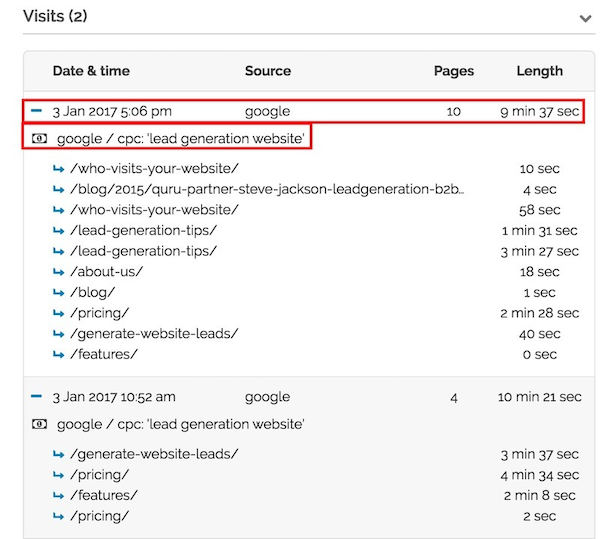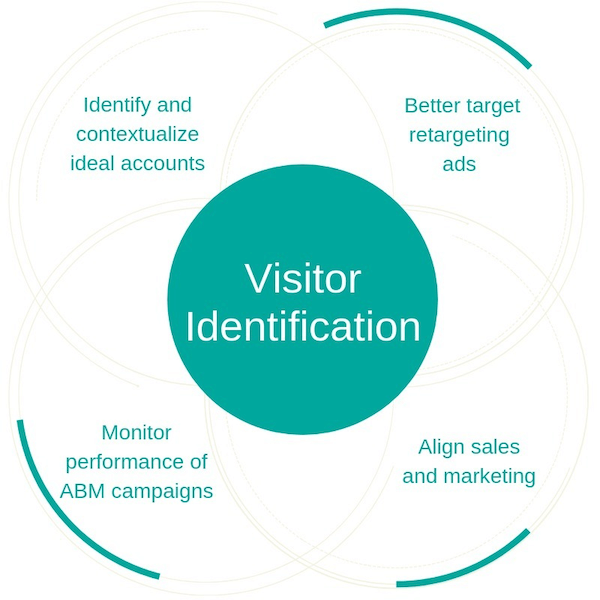If you’ve worked in marketing for more than half a day, I’m guessing you have heard a few marketing buzzwords.
Authentic
Omnichannel
Growth hacking
Synergistic low hanging fruit
Okay, I might have made the last one up.
The point is, there’s always someone selling snake oil.
“The perfect, easy tip that will propel your brand to new heights. Buy now!”
It reminds me of the Sham-Wow infomercials.
Marketing gets saturated with empty buzzwords that creep into our campaigns.
This post is not about meaningless buzzwords or marketing snake oil.
But it is about a strategy that has the power to increase your ROI — if used correctly.
DocuSign grew its sales pipeline by 22 percent.
Invoca increased conversions by 200 percent by understanding what’s driving inbound calls.
An account-based marketing strategy takes what you are already using, and makes it even better.
Like Mendix did with their homepage.
Mendix utilized account-based marketing to display different copy on their homepage targeting industries.
Mendix saw a 10% increase in leads generated and a 6% reduction in homepage bounce rate.
So, here’s the thing.
Traditional inbound marketing relies on attracting as many people to your website.
Then leading a few through a sales funnel to convert finally.
But there is a better way.
Account-based marketing flips the funnel upside down.
Don’t focus on trying to get 100 people to read a blog post, 25 to download an ebook, and 5 to convert.
ABM aims at pinpointing exactly which companies are interested in your brand.
And then target them with ads and content.
Note: Starting a account based marketing campaign? Try Leadfeeder free for 14 days to see which companies visit your website, the pages they visit, whether or not they’re in your CRM, and more.
The rise of ABM
In today’s on-demand, digital world, personalization has become crucial to marketing.
It’s the bacon to your eggs.
Account-based marketing takes personalization to a higher level.
75 percent of consumers state that they prefer personalized marketing offers. Account-based marketing takes personalization to a higher level.
And brands that want to stay competitive are taking note.
92 percent of B2B companies said ABM is “extremely important” or “very important” to their marketing efforts.
Most companies recognize the importance of ABM in their business.
So much so, that they are also willing to invest cold hard cash to be more efficient at it.
61 percent of businesses said they plan to invest in tools, technologies, and services for their ABM efforts in the next year.
And it is easy to see why.
87 percent of B2B marketers reported that account-based marketing delivers a higher ROI than other marketing activity.
Chris Carter of Rep Interactive describes ABM this way:
“ABM gives marketers the opportunity to create more personalized messaging for specific groups of individuals, as opposed to creating blanket messaging for a large population. When approaching a specific account, it’s important to spend as much time and effort creating relevant content that provides value for your prospective customers.”
Does ABM mean inbound marketing is dead? 🤔
Not at all!
ABM and inbound marketing can work together beautifully.
Let me show you how.
What are the benefits of ABM?
Interest in ABM has increased rapidly in the past few years.
A look at Google Trends shows there has been an increase in searches about ABM since early 2016.

That is likely due to the approach’s effectiveness.
This study found that companies that use ABM can generate 208% more revenue than those who don’t.
The team at bynder group saw ABM work to improve 205% of engagements.
When we implement ABM initiatives for our clients, we make sure to customize campaigns for specific accounts. Our ABM campaigns consistently return higher ROI than other marketing activities for our clients. One of our clients saw a 205% increase in bottom-of-funnel engagements, which was a huge win for the company and the team. Gaining insights into buyer intent provides us with the information we need to market more efficiently and with better results. - Rob Bynder, President, Bynder Group
How, exactly, can ABM help your company grow? Here is a look at the benefits.
Benefit 1: Higher & easier to track ROI
Every business and every audience is different. There is no one-size-fits-all approach that will work for every brand.
Understanding ROI is critical to know which marketing strategies are useful. And which are not.
Companies have long struggled to track the ROI of their marketing efforts. A Google search shows more than 20 million results related to tracking ROI.

That is an overwhelming amount of tips on how to track ROI.
ABM makes it far easier to track the ROI of marketing efforts because it is exact and targeted.
With traditional inbound marketing, ROI is tracked by broad metrics. Metrics like how much traffic a post got or how many ebook downloads.
Besides being easier to track, ABM also tends to offer a much higher ROI.
B2B companies are using the ROI they gain from ABM to identify content and strategies that are moving users down the funnel.
And, this reveals how where the holes are in your funnel.
But, calculating ROI from your ABM efforts makes me feel like I’m having a Jessica Simpson moment. (Remember the is this tuna moment?)
You don’t want the feeling.
ABM is a mystifying marketing strategy with many channels running on all cylinders.
That’s why a CRM integrated with marketing automation software is vital to your sanity. Trust me on this one.
Benefit 2: Better aligns sales & marketing
It is no secret that sales and marketing teams are often at odds.
It’s like when Woody first met Buzz Lightyear.
The problem is sales and marketing conflicts can have a massive impact on your bottom line.
Misalignment between your sales and marketing teams can result in a loss of as much as 10 percent of your total revenue.
Did that make your eyes go?
Yeah, me too.
To pack more in that punch, sales and marketing teams need to work hand in hand.
You promise one thing in marketing. Then, deliver something different. That’s a sure-fire way to tick off prospective customers before they ever sign up.
You don’t want another Chiptole moment.
Using account-based marketing, your sales team might notice they get fewer leads.
GAH! Sounds terrible, right?
Not so much.
Currently, marketing is passing a massive amount of leads into sales with a smile and a wave.
With ABM, sales and marketing can work together to provide leads with the information they need to convert.
Leads that do get passed on are hot, which lets your sales team do more of what they do best— make sales.
Better sales and marketing alignment can increase customer retention and improve sales.
There’s proof.
Companies have 36 percent higher customer retention. And, 38 percent higher sales win rates that companies with “smarketing” teams see.
Benefit 3: ABM is more efficient
Account-based marketing is a narrow approach.
Instead of targeting everyone, you target key accounts you know will drive higher revenue.
Think about it this way.
With traditional inbound marketing, you are casting a wide net. And, waiting to see what fish get caught.
You might land a few minnows, a few catfish, and if you are lucky, maybe a few largemouth basses.
With ABM, you can design bait to attract those largemouth basses and keep them from slipping away.
Let’s say you have a group of high-value customers with lower deal value customers. You will want to cross-sell and upsell to existing higher-value customers.
You may design competitor campaigns. Or, adapt content to help deliver the right message at the right time.
And, that is what Couchbase did.
With a solid ABM strategy, Couchbase generated $1.5 million worth of sales pipeline. And, increased AOV by 1371%.
Couchbase’s campaign allowed them to acceleration growth for their highly engaged accounts.
ABM gives your company to spend more time and money on landing that largemouth bass, instead of ending up with a net full of minnows.
Visitor Identification is the missing link in account-based marketing
Account-based marketing is one of the most effective marketing strategies for enterprise companies.
But, if you dive into ABM without understanding who you should be targeting, you’re limiting the potential of your campaigns.
Knowing who you’re targeting is the missing link in account-based marketing.
When you understand your audience, you can provide better personalization.
By 2020, smart personalization engines will recognize customer intent. This will enable businesses to increase their profits by 15%.
But, how do you understand your audience’s needs better if you don’t know who they are?
Wouter Dieleman, the former content marketer at Ozmo, uses Leadfeeder to identify his audience coming to his site.
Here is a peek at what you would see.

We designed Leadfeeder as an account-based marketing software.
Our goal at Leadfeeder to provide companies with the data they need to be more effective at ABM.
When you build a custom feed, you can set specific, highly targeted criteria to zero in on an actionable list of leads that are much more likely to convert.

Wouter Dieleman was wasting away 98% of his website visitors who didn’t share their contact information on a form.
He used Leadfeeder to see what landing pages a company was looking at on their site.
Next, Wouter Dieleman searches for the decision-maker on LinkedIn. And, adds their contact details to Salesforce.
Then, he sends a personalization outreach email one week after they visited the site. In the email, he leads with the landing page the company visited.
Something like this:
Hey Anna,
I noticed you were looking at our MailChimp integrations. Is there anything else I can help you answer?
Let’s schedule a time to chat.
Wouter Dieleman is a perfect example of how to align your sales and marketing teams with ABM.
He gained visibility into who is on your site and how they interact with it, which enabled him to:
Uncover and understand ideal target companies
Deliver personalized campaigns with email and ads
Create better alignment between marketing and sales teams

Knowing who is visiting your site is the missing link.
Not knowing who is visiting results in companies failing to see the full potential of ABM.
Account based marketing software can bridge this gap with insights into visitor identification.
Level up your ABM with visitor identification
In an increasingly competitive online market, standing out is a significant challenge.
ABM has the power to help brands break through the noise and engage with companies on a personal level.
But, like every other marketing strategy, ABM must be used strategically.
And you’re not only targeting companies you want to buy your product.
But, you are targeting companies who have already expressed interest in your products or services.
Companies seeing significant benefits from ABM marketing plan to dedicate 53 percent of their budgets to ABM in the next three years.
The writing is on the wall — to be successful, brands need to be willing not to put in place ABM but invest in it.
Note: Starting a account based marketing campaign? Try Leadfeeder free for 14 days to see which companies visit your website, the pages they visit, whether or not they’re in your CRM, and more.
Now that you're here
Leadfeeder is a tool that shows you companies that visit your website. Leadfeeder generates new leads, offers insight on your customers and can help you increase your marketing ROI.
If you liked this blog post, you'll probably love Leadfeeder, too.
Sign up







